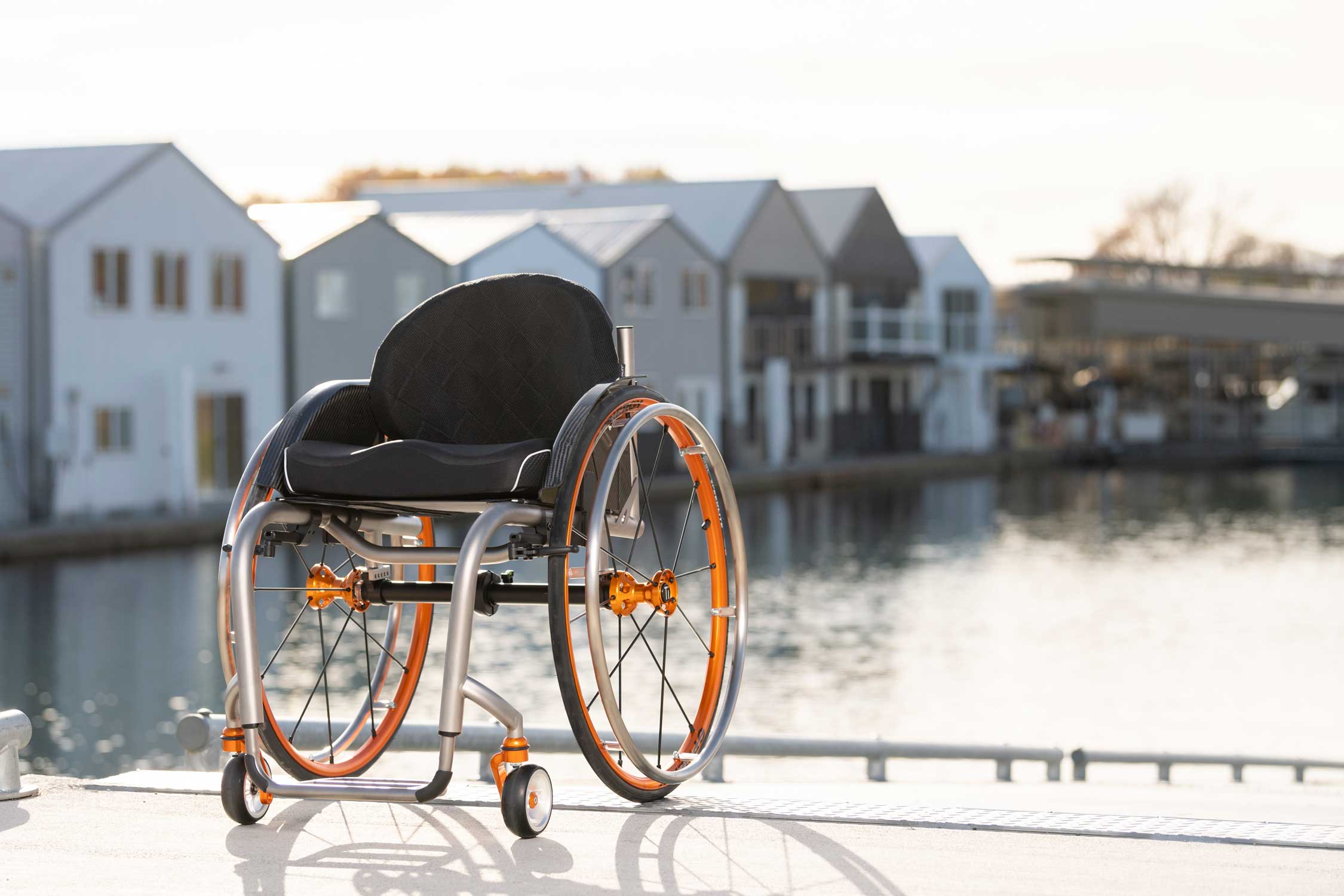
When considering the weight of a manual wheelchair, we often think of the number on the scale first. Lighter wheelchairs should be easier to propel and handle, right? However, several other crucial factors significantly impact the perceived heaviness and overall user experience, including the wheelchair's setup, pushing efficiency, and fit.
One key aspect is how the weight is distributed across the wheelchair. A chair with a low centre of gravity and a well-balanced frame can feel much lighter to push, even if it weighs the same as another chair. Proper weight distribution ensures that the user can propel the chair efficiently, reducing the effort required for movement.
The type of wheels and tires also plays a significant role. Lightweight, high-performance wheels with pneumatic tires tend to roll more smoothly and with less effort compared to solid or foam-filled tires. The size and material of the rear wheels further influence the energy needed to move the wheelchair. Similarly, the quality of the bearings in both the front casters and rear wheels can make a substantial difference. High-quality bearings reduce friction, making it easier to push the wheelchair, while poorly maintained or low-quality bearings increase the effort required.
A wheelchair that is customised to fit the user’s body and specific needs will always feel lighter than a generic model. Proper seating and positioning ensure that the user can apply their strength more effectively, and features like adjustable seat height, backrest angle, and footrest position all contribute to a more ergonomic and efficient pushing experience.
The material and design of the wheelchair frame also influence how it feels to push. While the material impacts the actual weight, the design of the frame affects how energy is transferred from the user to the wheels. Modern materials like titanium or carbon fibre offer strength and durability with minimal weight, and designs that reduce flex and increase rigidity help in transferring the user's energy more directly to the wheels, enhancing the feeling of lightness.
Lastly, the user's physical condition, including strength, endurance, and technique, impacts how heavy a wheelchair feels. Proper training in propulsion techniques can make a substantial difference. For instance, using long, smooth strokes instead of short, rapid pushes can conserve energy and improve overall efficiency. Training on how to use the wheelchair effectively can make a substantial difference.
Understanding the factors that contribute to how heavy a manual wheelchair feels goes beyond just looking at the scale. It's about optimising the setup, ensuring proper maintenance, and selecting the right components for the user's needs- and that’s where GTK come in. By considering these aspects, GTK can help wheelchair users achieve a more comfortable and efficient experience, making your daily activities easier and more enjoyable.
So, the next time you think about wheelchair weight, remember: it's not just about the numbers, but the nuances that make all the difference.



